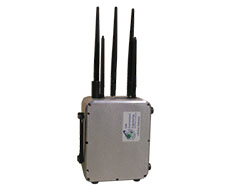Safe Environment Engineering provides an Internet of Things (IoT) system solution for collecting, monitoring, displaying, notifying, and aggregating instrumentation sensor data including the Chemical, Biological, Radiological, Nuclear, and Explosive (CBRNE) family of devices.
The wireless interoperable network telemetry devices attach to the instrumentation that is left on-site of potentially hazardous environments. A Smart Gateway then creates communication paths between the sensor’s origin and remote Subject Matter experts.
The software displays the instrumentation readings and location within a geographic information system (GIS), giving the experts the opportunity to safely assess the situation and take action to prevent a disaster.
What Is A Hazardous Environment?
Typically, the most common environmental hazards are airborne contaminants. Pollution of any hazardous substance in the air can be widespread if not contained, creating a hazardous environment. An environmental hazard can be detrimental in a populated area.
What Do We Look For In A Hazardous Environment?
- Integrated Chemicals
- Biological Agents
- Radiation
- Nuclear Materials
- Explosives

Who Uses These Hazardous Environment Detectors?
Agencies like the United States Environmental Protection Agency, EPA, heavily rely on this technology for critical communication needed to alert the public of life-threatening conditions. These agencies are constantly performing environmental monitoring in an effort to increase national preparedness.
“At the Kilauea volcanic eruption event, ten thousands of metric tons of sulfur dioxide began pouring out of the volcanic fissures on a daily basis. We were able to implement an island-wide air-monitoring program by utilizing the Safe Environment Engineering technology to provide telemetry from the instruments that were set up at multiple locations around the eruption,” said Jason Musante, an On-Scene Coordinator at EPA.
“What was most amazing about using this technology on-site was the ability to share this information with multiple users in real-time. The Safe Environment Engineering technology and real time updates allow our first responders and emergency personnel to safely and successfully protect the public.”

Save Time, Money, and Lives
Using the Safe Environment Engineering technology allows your team to immediately access knowledge of the environmental conditions without sending in personnel back and forth to report the scene. Early detection can stop the hazard at the perimeter and allow a faster response from teams that can prepare ahead of time.
Having more information of the hazard makes it safer for First Responders. We are able to use instruments and reduce the First Responder footprint prior to the event. The data is traceable and the documentation can be used in future trainings for prevention or quicker response times. Companies typically see reduced insurance costs when these products are used as preventative tools.
For more information regarding this technology and hazard prevention, contact us at (888) 742-5893.